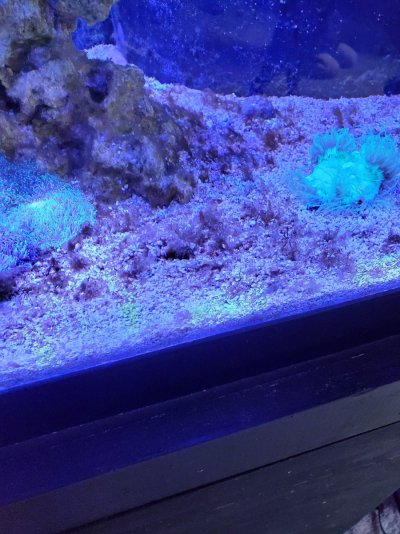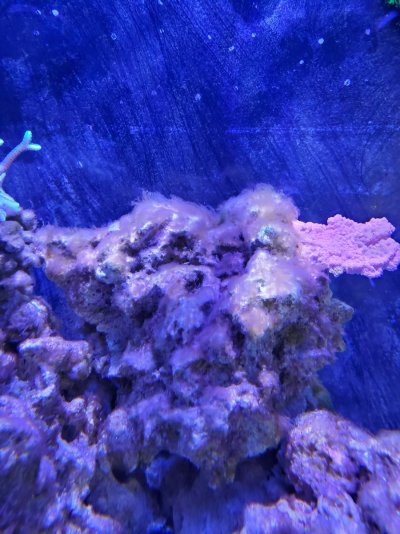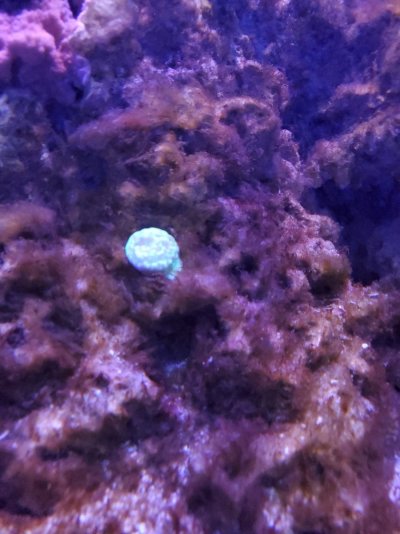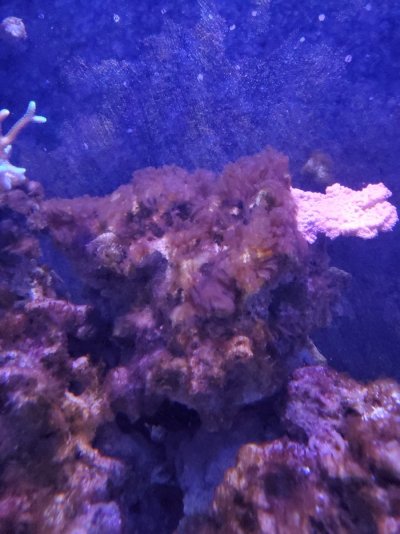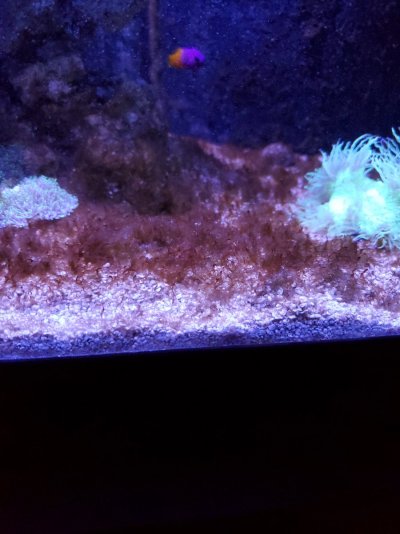I have never come across this algae before. It looks sorta like dinos or diatoms. It is a brown hair that turns into a brownish white snot. It comes back fast after manual cleaning and leaves white fibers behind after I scrub. It grows on the rocks and glas and sand... but not on the corals. The only thing that touches it are my area snails... but they can't keep up. Lawnmower blenny and sailfin tang don't seem to touch it... nor my reef hermits. I have tried h2o2 treatment at 1ml per 10gal and doesn't seem to touch it. I run phosnet and seagel. PO4 is .02 nitrate is undetectable. I use ro/di water that tests 0ppm. Tank is about 10 months old. Have a fuge with cheato in it. Any ideas?
